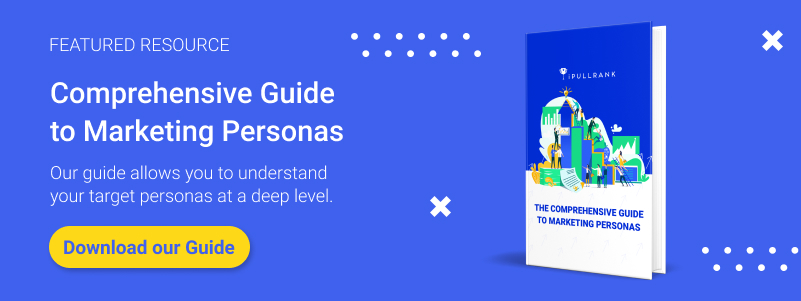In order to ensure that your content reaches your audience, your content plan should be well executed. However, the system that jumpstarts a content plan is often forgotten —your content ecosystem.
A content ecosystem is a map that contains all elements of your organization’s content. This includes your content plan, workflows and processes, teams involved, and tools. It helps to organize ideas, serves as a template to outline actionable items, and helps set clear guidelines for the involvement of projects. There are many articles that urge you to pump out content because it’s “necessary” and “essential to the success of your business”, but what about the foundation and container that houses your content?

Elements of a Content Ecosystem
A content ecosystem is a living and breathing engine. While it changes and grows with a business’ needs, here are four main elements that all companies should include in their landscapes:
- People Who Create Content
- What teams need to be involved in your content plans?
- What departments should be involved in review and compliance?
- Who is responsible for editorial oversight?
- Who is responsible for removing and retiring?
- Processes to Create Content
- What tools need to be integrated into your processes in order to help them flow efficiently?
- What CMS and accompanying solutions best fit the team?
- Where does the development team plugin and what methodology do they use?
- Tools to Create Content
- Are there any programs that have been released lately that could make creating your content easier? More current? Efficient?
- What are the limitations within your current environments?
- Plans to Refresh and Retire Content
- Is there a process for off-boarding content?
- How often do you refresh or retire your content?
- Does your content speak to your current audience?
- How has your audience evolved?
- Does your content reflect those changes?
What a Content Ecosystem is not …
- A content plan
- A document that provides action towards marketing your content and measuring data that supports your content strategy.
- A concept map
- A visual representation that shows the relationship between concepts and ideas. In contrast, a content ecosystem is a type of map that shows the flow and relationships between actionable items.
Your Content Plan & Content Ecosystem
Content Ecosystem is the landscape to create content. It includes all of the systems in place that helps you to organize your overall plan of action for content in your organization.
The interaction and communication between all systems within an ecosystem produce the best outcome. Without the content ecosystem, the content plan will work, but not at an optimal level.
Your content ecosystem should include :
- A snapshot of the team members involved
- Products to promote
- Timeline of promotion
- Channels of promotion
- Goals for the performance of the content
A concept map is a tool within your ecosystem to help visualize how everyone and everything works together. It shows where there are efficiencies and areas that can work together better.

Why you need a Content Plan
A Content Plan is the project management flow of your content creation. DIVVY HQ has a great visual that breaks down essential elements of content planning.

Essentials of Content Planning
- Documented Process & Content Workflow
- Use platforms that are easy to navigate and tailored to your company’s needs.
- Why it matters: This reduces duplication and just sheer confusion.
- Use platforms that are easy to navigate and tailored to your company’s needs.
- Content Calendar
- Timing and planning are key when releasing content.
- Why it matters: Visibility is the first actionable item you want from your audience. This includes the time of day content is being broadcasted and product mindfulness (is the content appropriate for release during this specific climate).
- Timing and planning are key when releasing content.
- Promotion and Distribution
- What channels does your audience use? What medium is best to deliver that content?
- Why it matters: Using the platform that has the best features for your product, audience, and call to action is ideal.
- What channels does your audience use? What medium is best to deliver that content?
- Transparency and Communication
- Leave no question unanswered, over-communicate if you need to.
- Why it matters: Time and resources could be wasted when tasks are not clear. There’s no time for that!
- Leave no question unanswered, over-communicate if you need to.
- Measurement and Optimization
- How will you know if the content you are producing is performing well?
- Conduct keyword audits every six months to a year.
- Why it matters: What kind of content does your audience like the most? Track how it performs over time and modify your strategy accordingly.
There are many articles that discuss what a content ecosystem is and its importance but what about improving the way your ecosystem operates?
Characteristics of a Healthy Content Ecosystem
- Efficient
- Establish processes and systems
- Scalable
- Managing potential growth and modifying the established processes accordingly
- Accessible
- Everyone apart of the projects has clear visibility on documents and files
- Repeatable
- Tasks should be replicable. Over time you will be able to refine how content is delivered once a template and standard of replication are established. Having a uniform style of branding helps to make your business easily identifiable, not to mention if someone takes a vacation or leaves the company there will always be a template as to how content should be broadcasted.
How can I improve my content ecosystem?
It’s always a good idea to revise your workflow systems at least once a year. If you already have a content ecosystem in place, update your ecosystem with the following tips:
1. Review processes and systems
In order to ensure that content is distributed in a timely manner using tools and platforms that aid in implementation. From approval time to minimizing editing time, review your internal system every six to nine months to ensure that you are making great use of your team members and toolsets.
Ask yourself these questions:
- Are there tasks that can benefit from automation?
- Do you have duplication of efforts or roles?
- Is there enough oversight and support across the ecosystem?
- What bottlenecks can be alleviated?
2. Manage people’s roles and responsibilities
Better Content does not happen without creators. They are often the first line of defense and the last. Having the right people on your team, across the ecosystem is crucial to a streamlined process and removing any roadblocks.
Some imperative team members include:
- Content Strategists
- Plans the content strategy which includes identifying the right content for the right audience.
- Content Creators
- Uses the Content strategy to pump creative content that will be posted in the brand’s different channels.
- Marketing Managers
- Publishes, distributes, and measures content.
- Content Editors
- Refines and formats content
- Content Managers
- Plans and creates digital content
- UX/UI Designers
- Makes Imagery that accompanies your content
- Front-End/Backend Developers
- They ensure content is developed to programming standards and best practices
- Legal/Compliance
- Ensures that all content is in accordance with the brand’s legality and R&D standards.
- Digital Marketing Specialists
- Works alongside marketing to maintain, create, and revise the brand’s image and campaigns
- Content Analysts
- Analyses and reports on digital assets and performance
- Project Managers/Producers
- Ensures all content projects are created to spec and delivered on time and within budget.
- Ensures all content projects are created to spec and delivered on time and within budget.
3. Assess duplicating efforts
You must have a central location for documents, both works in progress and post-project. Working effectively is working together and sometimes at the same time. Most of us will be working from home for quite some time and if you haven’t already, refine your workflow. Who is working on which projects? Let’s work on the project during the same time, comment on anything you have a question about, and track the progress of the document as well.
Some of the tools we use are :
- ClickUp – Project Management tool
- Google Drive – Cloud-Based File Management tool
- Slack – Open Communication tool
- Jira – Issue and Project Tracking
4. Manage necessary approvals
Simplify the approval process. Ten people on your team do need to look at every piece of content that is going out into the world. When feedback is given, be sure to be specific. Assign quality assurance dues to two to three specific team members. Of course if they are a part of a larger company this may be difficult to implement but most times content becomes dated because it is sitting on someone’s desk for approval. Have a plan for slow turnarounds.
5. Archive outdated content
When content has served it’s time, archive. Unless the content was so off-centered (how was this approved?), please do not completely discard. Much content can be repurposed or redirected to a more up-to-date version. So, how do you know when it’s time to archive your content?
According to the Search Engine Journal there are five scenarios to consider:
- Scenario 1: No Changes Needed
- Scenario 2: Content Update / Refresh
- Scenario 3: Content Rewrite
- Scenario 4: Content Consolidation
- Scenario 5: Content Deletion / Deindexing
A content ecosystem isn’t created in a day. It happens over lengthy periods of time, as content is being created and published and as new members come on to your company’s content team. Having a clear view of how all the moving parts work together is crucial to a smooth, almost pain-free content engine.
If you need help with your content strategy or developing your brand’s content ecosystem, reach out to one of our Account Executives and subscribe to our newsletter for more tips on SEO and Content Strategy.








